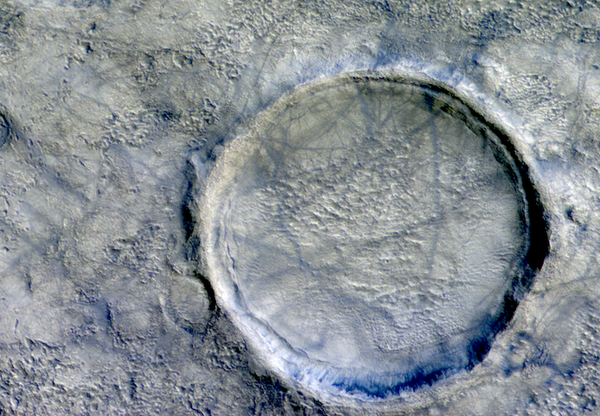This article was published in Scientific American’s former blog network and reflects the views of the author, not necessarily those of Scientific American
The thin atmosphere that hugs Mars is a tricky beast to deal with. For incoming spacecraft it represents enough of a barrier to the surface that it has to be negotiated carefully. But it’s also not dense enough to provide the same amount of natural resistance that we can exploit on Earth to gently parachute or glide ourselves to the ground. There are strong seasonal variations too. During northern summer, for example, polar repositories of solid frozen carbon dioxide sublimate into gas – flooding the atmosphere and pushing up the typical surface pressure by an astonishing 25%.
For science though, during the past two decades, the biggest game afoot in the martian atmosphere has been to ‘catch the methane’ – a compound that could be a signpost to the presence of life, now or in Mars’s past.
Back in 2009, for example, evidence seemed to have been found in remote telescopic spectroscopic data from Earth (taken in 2003 and 2005) for a seasonally varying enhancement of atmospheric methane – correlated with specific regions on Mars. This evidence tallied with earlier work in 2004 that included orbital spectroscopic data from ESA’s Mars Express mission. But these were somewhat controversial results, using exceedingly demanding astronomical observations and data analyses of methane concentrations that were just a few parts per billion by volume (although suggesting a total methane outburst that was comparable to Earth-bound methane seeps from oceanic sources). The fact that the methane seemed to come and go was intriguing, but also puzzling, since it was thought that the gas might waft around for a couple of centuries or more – implying active replenishment from the planetary surface, as well as speedy atmospheric removal.
On supporting science journalism
If you're enjoying this article, consider supporting our award-winning journalism by subscribing. By purchasing a subscription you are helping to ensure the future of impactful stories about the discoveries and ideas shaping our world today.
Between 2013 and 2017 NASA’s Curiosity Rover seemed to provide new support for seasonal methane outbursts – detecting events such as a 2-month long bump in concentration from the background level. But this apparent detection also contradicted what the rover’s sensors had seen just 12 months earlier, when they failed to detect any significant methane.
Now, in 2019, we have some new, independent measurements. This time the data is from the ESA-Roscosmos ExoMars Trace Gas Orbiter (TGO) mission – using a solar occultation technique that measures what wavelengths of sunlight are absorbed by the martian atmosphere. The results strongly rule out the presence of any methane across different latitudes – pushing the limit to 10 to 100 times lower concentrations than any previously claimed methane variations or backgrounds.
So, what does this mean? If there really are outbursts or a steady supply of methane from some unknown surface sources that methane has to be quickly removed or sequestered from the atmosphere before it can mix and spread globally. In fact, the methane has to be got out of the way about 1,000 times faster than any chemical or physical process that we are aware of in the Mars environment, or else the TGO instruments would have found it.
For now, the puzzle remains unsolved. When TGO made its measurements the Curiosity rover was accumulating more data that seems show – in addition to some spikes of gas – a seasonal variation in the ‘background’ methane concentration at a level of a few tenths of a part in a billion. But TGO seems to rule even those modest levels out, sensing nothing down to about 0.05 parts per billion. Since the rover is sniffing the atmosphere about a meter above the ground, while TGO is probing at around five kilometers altitude that suggests that whatever might be afoot is taking place between these heights.
Equally, it is possible we’re getting something horribly wrong in our data, or maybe the martian environment has some new tricks up its sleeve that we are completely in the dark about.
